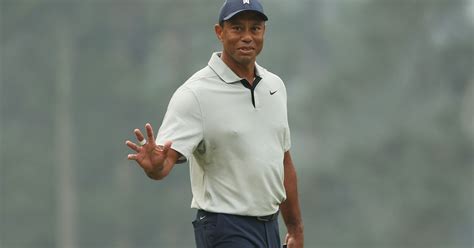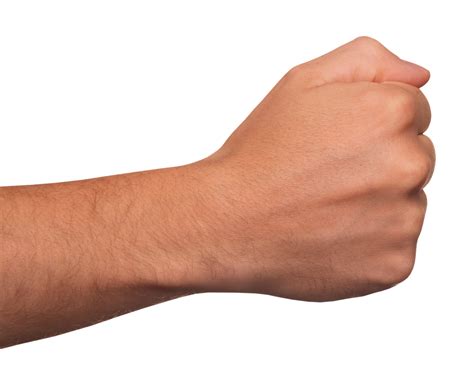
Tiger Woods’ potential return to competitive golf is generating significant buzz after a recent photograph surfaced online, showing him at a junior golf event, fueling speculation about his comeback and sending golf enthusiasts into a frenzy. The image, depicting Woods observing his son, Charlie, has ignited hopes that the 15-time major champion is preparing for a return to the sport despite his ongoing recovery from a severe leg injury sustained in a 2021 car accident.
The photograph, widely circulated on social media, shows Woods appearing to be in good spirits and walking without any noticeable limp or support. While details remain scarce, the image’s impact is undeniable, reigniting passionate discussions among fans and analysts about the possibility of seeing Woods back on the PGA Tour. This latest sighting follows Woods’ limited appearances in recent years, heightening anticipation for any indication of his potential return.
Woods’ last official PGA Tour event was the 2022 Masters Tournament, where he made the cut but visibly struggled with his mobility. He later withdrew from the 2023 Masters before undergoing further surgery on his ankle. Since then, updates on his condition have been infrequent, leaving fans eager for positive signs of progress.
The surfacing of this new photo coincides with growing anticipation for the upcoming Hero World Challenge, Woods’ annual charity event scheduled for late November. While Woods has not officially confirmed his participation, the possibility remains a tantalizing prospect for fans and the golf world. Many are hopeful that he might use the event as a platform for his return, even in a limited capacity.
The frenzy surrounding the photograph underscores Woods’ enduring popularity and the widespread desire to see him compete again at the highest level. His comeback, whenever it occurs, would be one of the most highly anticipated events in golf history, marking another chapter in his legendary career.
Background and Context:
Tiger Woods’ career has been marked by both unparalleled success and significant challenges. Before his 2021 car accident, he had already overcome numerous setbacks, including multiple knee and back surgeries. His victory at the 2019 Masters Tournament, after an 11-year major championship drought, was considered one of the greatest comebacks in sports history.
The car accident in February 2021 resulted in severe injuries to his right leg, requiring multiple surgeries and a lengthy rehabilitation process. Initial reports suggested that Woods might never walk normally again, let alone return to competitive golf. However, Woods has consistently defied expectations, demonstrating remarkable resilience and determination throughout his recovery.
In the months following the accident, Woods provided limited updates on his progress, focusing on his rehabilitation and spending time with his family. He made a surprise appearance at the 2021 PNC Championship alongside his son, Charlie, using a golf cart to navigate the course. While his participation was primarily ceremonial, it offered a glimpse of hope that he might eventually return to competitive play.
Woods made his official return to the PGA Tour at the 2022 Masters Tournament, a remarkable achievement considering the severity of his injuries. He made the cut but struggled with his mobility, finishing in 47th place. He later withdrew from the 2023 Masters before undergoing a subtalar fusion procedure to alleviate post-traumatic arthritis from his previous talus fracture.
The procedure was described as a success, but the timeline for his return remained uncertain. Woods has since been seen practicing and participating in various golf-related activities, fueling speculation about his potential comeback.
Impact and Analysis:
The photograph of Woods at the junior golf event has generated widespread excitement and optimism among golf fans. The image suggests that he is making progress in his recovery and may be closer to returning to competitive play than previously anticipated.
Several factors contribute to the intense interest surrounding Woods’ potential return. First, he is one of the most iconic and influential figures in golf history, with a global following that extends beyond the sport. His presence on the PGA Tour would undoubtedly boost television ratings, attendance, and overall interest in the game.
Second, Woods’ comeback story resonates with many people who have faced adversity in their own lives. His ability to overcome challenges and persevere against the odds is an inspiration to millions.
Third, the golf world is eager to see Woods compete against the current generation of top players, including Scottie Scheffler, Rory McIlroy, and Jon Rahm. A competitive Woods would add another layer of intrigue and excitement to the PGA Tour.
However, it is important to manage expectations and recognize that Woods’ return to competitive golf is not guaranteed. His injuries are significant, and he faces a long and arduous road to recovery. Even if he does return, it is uncertain whether he will be able to compete at the same level as he did before the accident.
Expert Opinions and Fan Reactions:
Golf analysts and experts have weighed in on the significance of the photograph and the potential for Woods’ return. Many are cautiously optimistic, noting that the image is a positive sign but cautioning against overhyping his chances.
“It’s great to see Tiger looking healthy and walking without any apparent difficulty,” said Brandel Chamblee, a golf analyst for Golf Channel. “However, we need to remember that he is still recovering from a serious injury, and it will take time for him to regain his full strength and mobility.”
“Tiger’s comeback would be incredible for golf,” said Justin Thomas, a close friend of Woods and a fellow PGA Tour player. “He is still one of the biggest draws in the game, and his presence would elevate the entire tour.”
Fan reactions to the photograph have been overwhelmingly positive, with many expressing excitement and hope for Woods’ return. Social media platforms have been flooded with messages of support and encouragement, demonstrating the enduring popularity of the golf legend.
“I can’t wait to see Tiger back on the course,” wrote one fan on Twitter. “He is my idol, and I know he can overcome this challenge.”
“Tiger’s comeback would be the greatest story in sports history,” wrote another fan on Facebook. “I’m rooting for him every step of the way.”
However, some fans have expressed concerns about Woods’ health and well-being, urging him not to rush his return and to prioritize his long-term health.
“I hope Tiger doesn’t push himself too hard,” wrote one fan on Instagram. “His health is more important than golf.”
The Hero World Challenge and Beyond:
The upcoming Hero World Challenge, scheduled for late November, is being viewed as a potential opportunity for Woods to make his return to competitive play. The event, which benefits Woods’ TGR Foundation, features a limited field of top players and offers a relaxed atmosphere.
Woods has not officially confirmed his participation in the Hero World Challenge, but his presence at the event would undoubtedly generate significant buzz. Even if he does not compete, he is expected to attend and provide updates on his condition.
Beyond the Hero World Challenge, Woods’ long-term plans remain uncertain. He has expressed a desire to play a limited schedule on the PGA Tour, focusing on major championships and other high-profile events. However, his ability to compete at the highest level will depend on his continued recovery and his ability to manage his injuries.
Potential Challenges and Obstacles:
Woods faces several challenges and obstacles in his quest to return to competitive golf. First, his injuries are significant, and he will need to continue to rehabilitate and strengthen his leg.
Second, he will need to regain his form and confidence on the course. After a long layoff, it will take time for him to get back to the level where he can compete against the best players in the world.
Third, he will need to manage the physical and mental demands of playing professional golf. The PGA Tour is a demanding environment, and Woods will need to be able to withstand the rigors of travel, practice, and competition.
The Enduring Legacy of Tiger Woods:
Regardless of whether he returns to competitive golf, Tiger Woods has already cemented his place in history as one of the greatest players of all time. His achievements on the course are unparalleled, and his impact on the sport is undeniable.
Woods has won 15 major championships, second only to Jack Nicklaus’s 18. He has also won 82 PGA Tour events, tied with Sam Snead for the most all-time.
Beyond his accomplishments on the course, Woods has also been a cultural icon and a role model for millions. He has inspired people of all ages and backgrounds to pursue their dreams and overcome challenges.
His comeback, whenever it occurs, will be a testament to his resilience, determination, and unwavering spirit. It will be a story that resonates with people around the world and reinforces his legacy as one of the greatest athletes of all time.
The Subtalar Fusion Procedure and its Impact
The subtalar fusion procedure Woods underwent is a significant aspect of his recovery. This procedure aims to alleviate pain and improve stability in the ankle by fusing the talus bone (a bone in the ankle that connects the leg to the foot) to the calcaneus (heel bone). Post-traumatic arthritis, which Woods developed following his initial talus fracture, can cause chronic pain, stiffness, and limited range of motion.
A subtalar fusion can be a viable option when conservative treatments such as physical therapy, medications, and injections fail to provide adequate relief. The procedure involves removing any remaining cartilage between the talus and calcaneus and then using screws or plates to hold the bones together while they fuse.
The recovery process following a subtalar fusion is typically lengthy, often involving a period of non-weight-bearing followed by gradual weight-bearing and rehabilitation. The goal is to achieve a solid fusion that eliminates pain and improves function. However, it’s important to note that a fusion can also limit ankle motion, which could impact a golfer’s ability to generate power and maintain balance.
The success of Woods’ subtalar fusion will be crucial in determining his long-term ability to return to competitive golf. If the fusion is successful and he can regain sufficient strength and mobility in his ankle, he may be able to resume playing at a high level. However, if the fusion is not successful or if he develops complications, it could limit his ability to return to the sport.
The Mental Game and Overcoming Adversity
Beyond the physical challenges, Woods’ mental fortitude will play a critical role in his potential comeback. After multiple surgeries and setbacks, maintaining a positive attitude and unwavering belief in his ability to compete will be essential.
Woods has demonstrated remarkable mental strength throughout his career. He has overcome numerous obstacles, including injuries, personal challenges, and intense competition. His ability to stay focused and composed under pressure has been a key factor in his success.
However, the mental challenges he faces now are arguably greater than ever before. He is older, his body has endured significant trauma, and he is competing against a new generation of talented players. To overcome these challenges, he will need to draw upon his past experiences and develop a new level of mental toughness.
Sports psychologists often emphasize the importance of setting realistic goals, maintaining a positive self-image, and focusing on the process rather than the outcome. Woods may need to work with a sports psychologist to develop strategies for managing stress, maintaining confidence, and staying motivated throughout his recovery.
The Technological Advancements in Golf and Their Impact on Woods
The world of golf has seen significant technological advancements in recent years, from enhanced equipment to sophisticated data analytics. These advancements could potentially benefit Woods as he attempts to return to competitive play.
Modern golf clubs are designed to be more forgiving and provide greater distance, which could help Woods compensate for any loss of power due to his injuries. Data analytics can provide valuable insights into his swing mechanics, ball flight, and course management strategies, allowing him to optimize his performance.
Additionally, advancements in rehabilitation and training techniques could help Woods recover faster and more effectively. High-tech equipment such as anti-gravity treadmills and virtual reality simulators can be used to improve his strength, balance, and coordination.
However, it’s important to note that technological advancements alone cannot guarantee success. Woods will still need to put in the hard work and dedication required to regain his form and compete at the highest level.
The Future of Golf and Woods’ Role in It
Regardless of whether he returns to competitive golf, Tiger Woods’ legacy will continue to shape the future of the sport. He has inspired countless young players to take up the game and has helped to broaden its appeal to a more diverse audience.
His TGR Foundation has played a significant role in promoting golf education and access to underserved communities. The foundation provides scholarships, mentoring programs, and STEM education initiatives to help young people achieve their full potential.
Even if he is no longer able to compete at the highest level, Woods can continue to contribute to the sport through his foundation, his design work on golf courses, and his role as a mentor to young players. His passion for the game and his commitment to giving back will ensure that his legacy endures for generations to come.
The Business of Golf and “The Tiger Effect”
The “Tiger Effect” is a well-documented phenomenon describing the significant positive impact Tiger Woods has had on the business of golf. His presence in tournaments historically led to increased television viewership, higher ticket sales, and greater sponsorship revenue. Even now, years after his peak performance, the mere possibility of his return generates substantial buzz and economic activity.
Companies associated with Woods, such as Nike and TaylorMade, have benefited immensely from their partnerships. His endorsements have been lucrative, and his influence extends to the design and marketing of golf equipment. The Hero World Challenge, his charity event, not only raises significant funds but also showcases the power of his brand.
If Woods were to make a successful comeback, the economic impact would be substantial. Television networks would be willing to pay more for broadcasting rights, sponsors would clamor for endorsements, and attendance at tournaments would surge. The “Tiger Effect” would be reignited, injecting new life and capital into the sport.
However, the business of golf is also evolving. The rise of social media influencers, the increasing popularity of alternative golf formats, and the changing demographics of golfers are all factors that could diminish the “Tiger Effect” over time. Nevertheless, Woods remains a powerful force in the golf industry, and his return would undoubtedly have a significant financial impact.
Frequently Asked Questions (FAQ):
-
What is the significance of the recent photograph of Tiger Woods?
- The photograph, depicting Woods at a junior golf event watching his son Charlie, has sparked renewed speculation about his potential return to competitive golf. The image shows him walking without any apparent limp, suggesting progress in his recovery from a severe leg injury sustained in 2021.
-
When was Tiger Woods’ last official PGA Tour event?
- Woods’ last official PGA Tour event was the 2022 Masters Tournament, where he made the cut but visibly struggled with his mobility. He later withdrew from the 2023 Masters before undergoing further surgery on his ankle.
-
What is the Hero World Challenge, and why is it relevant to Tiger Woods’ potential return?
- The Hero World Challenge is Woods’ annual charity event, scheduled for late November. It is a limited-field tournament featuring top players and is often viewed as a possible venue for Woods to make his return, even in a limited capacity. While he has not officially confirmed his participation, the prospect remains a tantalizing one for fans.
-
What type of surgery did Tiger Woods recently undergo, and how might it affect his golf game?
- Woods underwent a subtalar fusion procedure to alleviate post-traumatic arthritis from a previous talus fracture. This procedure fuses the talus bone to the calcaneus (heel bone), which aims to eliminate pain and improve stability in the ankle. While it can improve comfort and stability, it may also limit ankle motion, which could impact his ability to generate power and maintain balance in his golf swing.
-
What are some of the challenges Tiger Woods faces in returning to competitive golf?
- Woods faces several challenges, including continued rehabilitation of his leg, regaining his form and confidence on the course after a long layoff, and managing the physical and mental demands of playing professional golf. His ability to overcome these challenges will determine whether he can compete at the highest level again. Conclusion
The resurgence of Tiger Woods’ name in golf news following the circulation of his photograph underscores the enduring impact he has on the sport. While the photograph itself doesn’t confirm a definitive return date, it has acted as a beacon of hope for fans worldwide who are eager to see him compete again. The road to recovery from the severe injuries he sustained has been long and arduous, but the recent visual evidence suggests promising progress.
His legacy as one of the greatest golfers of all time is already cemented. However, his competitive spirit and drive to overcome adversity continue to fuel anticipation and excitement among golf enthusiasts. Whether he is able to return to his previous dominance remains uncertain, but his attempt at a comeback is a story that captivates audiences far beyond the realm of golf.
The golf world will be watching closely as Tiger Woods navigates the next steps in his recovery journey. The Hero World Challenge looms large as a potential event for his return, but ultimately, his health and well-being must take precedence. Regardless of the outcome, his influence on the sport and his ability to inspire millions will continue to be felt for generations to come. His potential comeback represents more than just a golfer returning to the course; it embodies resilience, perseverance, and the unwavering pursuit of excellence. The photograph serves as a reminder of his competitive spirit and reignites the hopes that he will grace the fairways once again.









